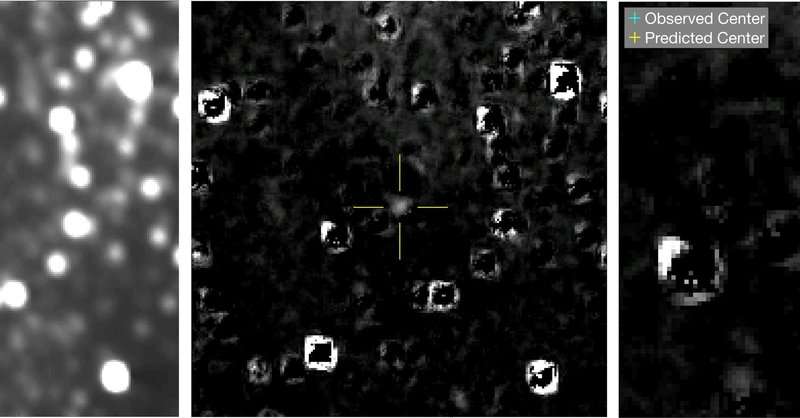Click on photo to start video.
Here’s the self-driving, electric, body-swappable car of the future.

Recently, we have shown that by administering the NAD+ precursor NMN (Nicotinamide Mononucleotide)in normal drinking water to older mice, NAD+ levels were restored to those normally associated with younger healthy animals. By administering NMN to mice for just one week, our lab demonstrated a robust correction in age-associated metabolic dysfunction and restored muscle mitochondrial function in old mice to levels seen in younger control mice (Gomes et al. 2013).
https://www.lifespan.io/campaigns/can-nmn-increase-longevity…019dfcda6c
Dr. Aubrey De Grey, SENS Foundation, Co-Founder, talks of species that live hundreds of years. We have to understand metabolism and postpone old age.
How can reverse aging by improving repair mechanism. Cells die, and the waste as well as energy byproducts to avoid tissue breakdown with methyl donors.
https://delgadoprotocol.com/product/neuro-insight/#1523582495879-e8979e45-c0bc
Cellular senescence is one phenomenon by which normal cells cease to divide. In their seminal experiments from the early 1960’s, Leonard Hayflick.
Senescent cells increase in many tissues with aging; they also occur in organs associated with many chronic diseases and after radiation or chemotherapy. Senolytics are a class of drugs that selectively eliminate senescent cells.
Cancer cells are immortal, why?
Self-driving pizza delivery!? The future is NOW! 😱🍕
Credit: ViralHog

NASA’s New Horizons spacecraft carried out a short engine burn on Oct. 3 to home in on the location and timing of its New Year’s flyby of the Kuiper Belt object nicknamed Ultima Thule.
Word from the spacecraft that it had successfully performed the 3½-minute maneuver reached mission operations at the Johns Hopkins Applied Physics Laboratory in Laurel, Maryland, at around 10:20 p.m. EDThe maneuver slightly tweaked the spacecraft’s trajectory and bumped its speed by 2.1 meters per second – just about 4.6 miles per hour – keeping it on track to fly past Ultima (officially named 2014 MU69) at 12:33 am EST on Jan. 1, 2019.
“Thanks to this maneuver, we’re right down the middle of the pike and on time for the farthest exploration of worlds in history – more than a billion miles beyond Pluto,” said mission Principal Investigator Alan Stern of the Southwest Research Institute. “It almost sounds like science fiction, but it’s not. Go New Horizons!”
Zero state reboot ~ amon twyman
The Zero State (ZS) community and movement was officially founded with the release of the Social Futurist Principles on 1st May 12011. It started energetically, but soon encountered a problem common across the internet, which we will briefly examine below. That problem led to a fallow period, and subsequent “reboot” announced at the end of December 12017.
The ZS reboot was intended to span this year (12018), and this article series aims to identify some key ideas related to that process, with a particular emphasis on our transition from theory to action. This is the last article series clarifying ZS ideas that I will be posting for the foreseeable future, so I can focus on developing our events, releases, and project teams.
The first of a series of info-nugget videos covering aging research. Today is a brief summary of aging.
For more aging research and news check out: https://www.leafscience.org/


China put tiny spy chips on many U.S. servers. That’s the word from Bloomberg Businessweek, whose cover story published Thursday asserts that Beijing persuaded Chinese hardware manufacturers to install a surveillance chip, half the size of a grain of rice, on the motherboards of hundreds of thousands of data servers sold around the world by a U.S. company called Supermicro, including to Amazon and Apple.
Celebrate Unlimited Life Spans and a presentation by Bill Faloon on Human Age Reversal.
Bill Faloon will give an update on Age Reversal, similar to a presentation that he shared at RAAD Fest 2018!
Bill Faloon compiled the 1,500-page medical reference book Disease Prevention and Treatment, and his latest book is Pharmocracy: How Corrupt Deals and Misguided Medical Regulations Are Bankrupting America—and What to Do About It. He is also Director and Co-founder of the Life Extension Foundation.
To promote Life Extension’s innovative medical concepts, Bill has been featured in hundreds of media appearances including The Phil Donahue Show, The Joan Rivers Show, Tony Brown’s Journal, ABC News Day One, and Newsweek magazine.
Church of Perpetual Life, a science-based church is open to people of all faiths & belief systems. We are non-denominational & non-judgmental and a central gathering place of Transhumans. What unites us is our common faith, belief, and desire in Unlimited Life Spans.